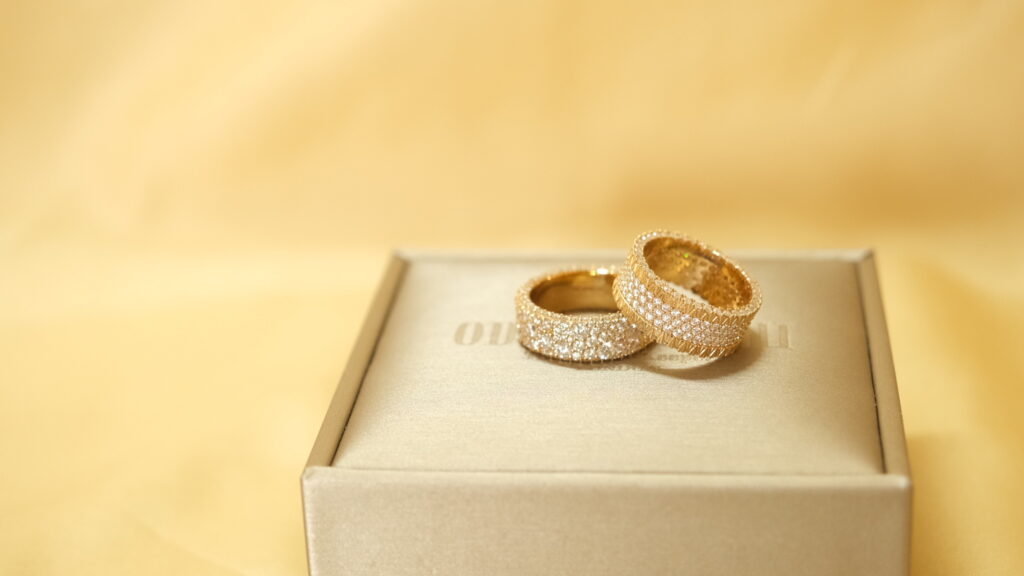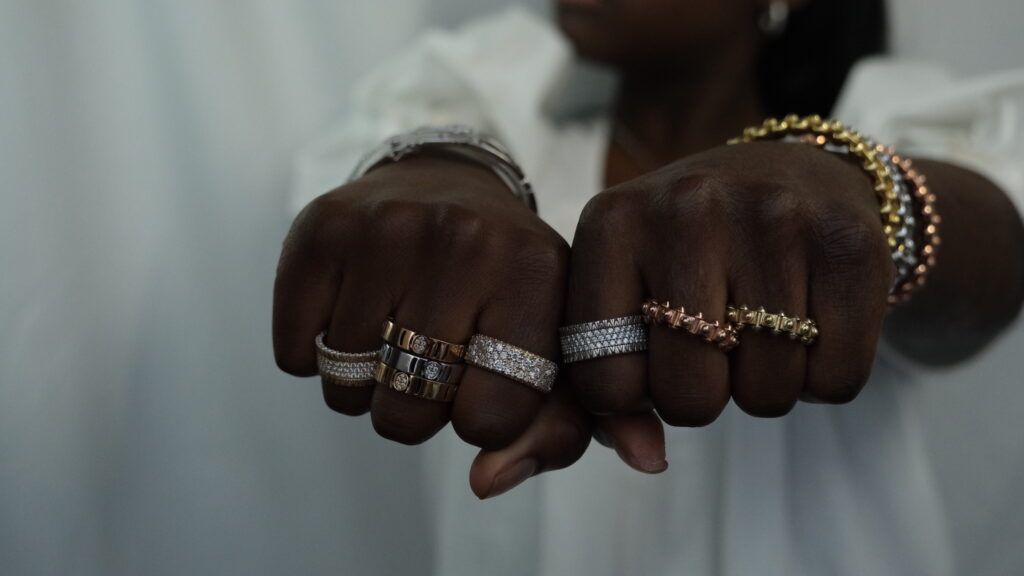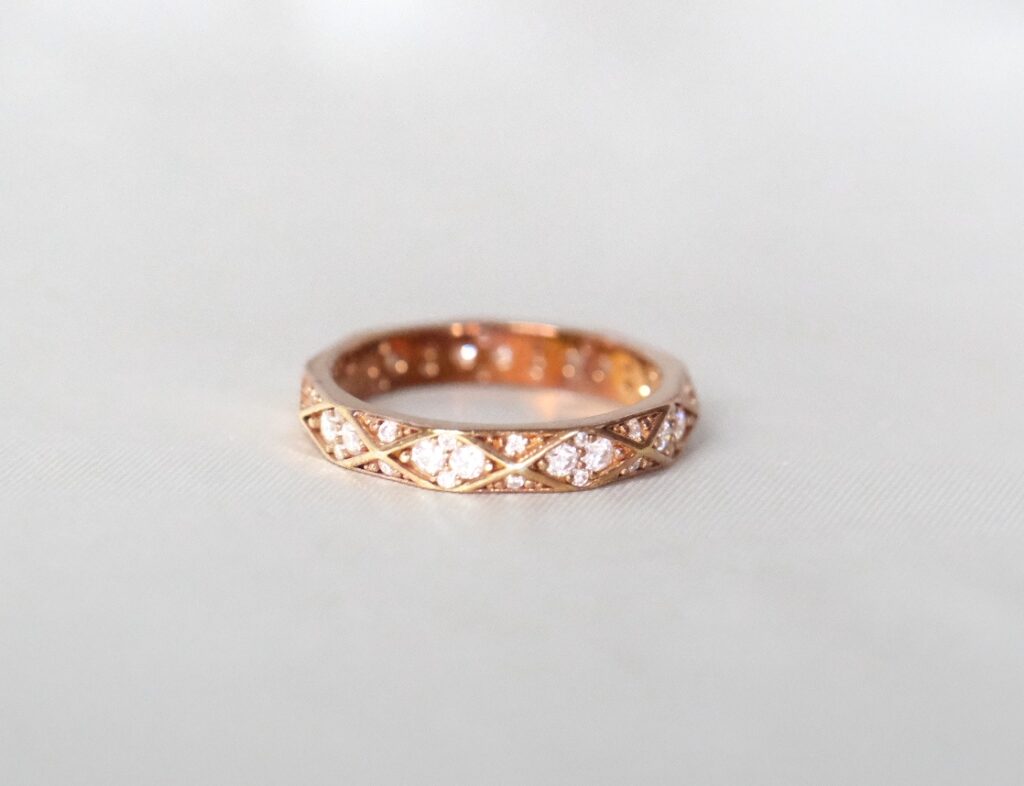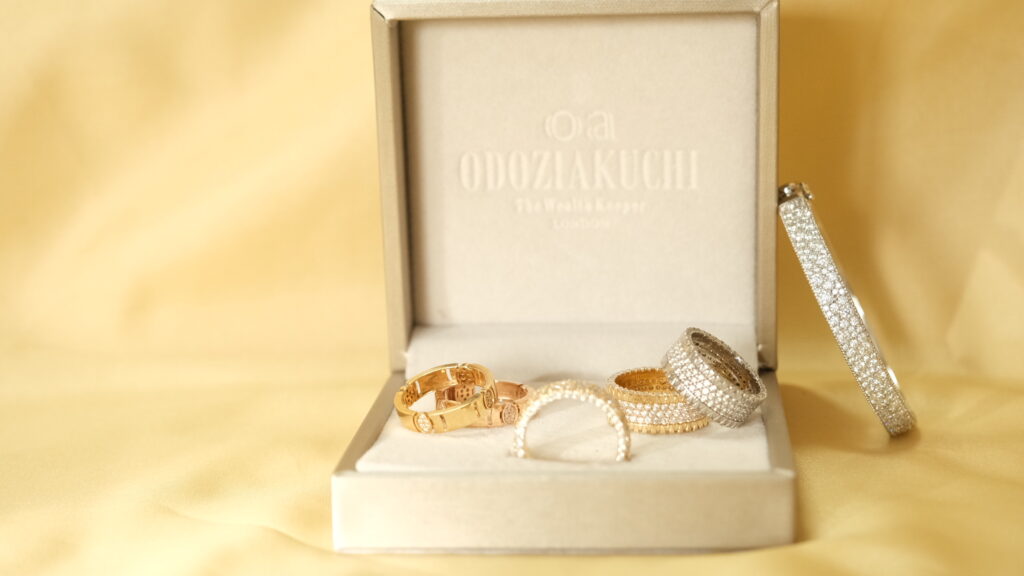Diamonds
SHOULD DIAMOND JEWELLERY HAVE BREATHING HOLES?
A diamond cut is a key factor to consider when choosing your next piece of diamond jewelry.
By Chinwe, Chief Creative Officer
Have you ever wondered why your diamond sometimes appears to have a hole in it?. One of the most intriguing jewellery design concepts for consumers is the diamond breathing hole. While these have generated so much interest that numerous theories and myths have been created around them. These small perforations, also known as ring holes or simply “holes,” are intentionally incorporated into the design of certain diamond pieces, particularly rings and other settings, for specific purposes. But are any of these beliefs true? Let’s engage in a discourse regarding the degree to which they are genuinely beneficial and the precision of all statements made concerning them?

What is a Breathing Hole in Diamond Jewelry
Breathing holes refer to tiny openings strategically placed within the metal setting of a diamond piece. These openings serve a dual purpose: they facilitate the passage of light through the diamond, enhancing its brilliance and sparkle, while also allowing for practical considerations such as easier cleaning and maintenance of the jewelry.
Origins of Breathing Holes in Diamond Jewelry
In some cultures, the breathing holes symbolize the concept of life and energy flow. The idea that a diamond “breathes” through these holes is associated with notions of vitality, renewal, and spiritual connection. Furthermore, breathing holes can be seen as a mark of craftsmanship and attention to detail in jewelry design. They represent the jeweler’s commitment to creating pieces that not only look stunning but also prioritize the longevity and health of the precious stones they contain.
Cultural and Traditional Significance of Breathing Holes
The origins of these holes can be traced to the early techniques used in diamond cutting and setting. In ancient times, diamonds were often set in jewelry using techniques that did not allow for adequate ventilation around the stone. This lack of airflow could lead to issues such as trapped dirt, moisture, or even damage to the diamond itself. Over time, jewelers and craftsmen recognized the importance of allowing diamonds to “breathe” by incorporating small holes or channels in the settings. These breathing holes served practical purposes, such as facilitating cleaning and maintenance of the jewelry. They also played a role in enhancing the diamond’s brilliance and sparkle by allowing light to enter and reflect more effectively.

-
Arc Ring – 18K Rose Gold 0.24ct
18K Rose Gold
£2,449 Select options This product has multiple variants. The options may be chosen on the product page -
Choupette Ring – 18K Gold 2.6ct
18K Gold
£3,950 Select options This product has multiple variants. The options may be chosen on the product page -
Constellation Bracelet – 18K White Gold
18K White Gold
£27,369 Select options This product has multiple variants. The options may be chosen on the product page -
Serendipity Bracelet – 18K Gold Plated Sterling Silver
18K Gold Plated Sterling Silver
£750 Select options This product has multiple variants. The options may be chosen on the product page -
Serendipity Ring – 18K Gold Plated Sterling Silver
18K Gold Plated Sterling Silver
£185 Select options This product has multiple variants. The options may be chosen on the product page
Should Diamond Jewellery Have Breathing holes?
Contrary to popular belief, diamonds do not require any breathing. Being a solid form of carbon, diamonds do not undergo any expansion or contraction in response to weather, temperature, light, air or even constant exposure to liquids. This dispels one of the most common misconceptions related to the need for air circulation in jewelry.
Why do diamond rings have holes in Them?
Why do diamonds have breathing holes if they don’t need them? The holes serve a practical purpose, making the diamond easier to handle and maintain.
The culet, or flat facet at the tip of the diamond’s pavilion, is fragile and can easily break if it comes into contact with metal during assembly. The breathing holes help to alleviate this problem.
In terms of maintenance, the holes provide valuable access to the back of the diamond or other gemstones. This is especially helpful for settings with several small stones set in a row, where dirt such as soap, skin cells, and oils can accumulate.
Accessing all the nooks and crannies of the setting and gemstones is crucial for proper maintenance, as it ensures that a piece of jewellery can be effectively cleaned using chemicals or an ultrasonic jewellery cleaner, fully restoring its charm.
-
Ball Torque Bracelet – 18K White Gold
18K White Gold
£4,438 Select options This product has multiple variants. The options may be chosen on the product page -
Choupette Ring – 18K Gold 2.6ct
18K Gold
£3,950 Select options This product has multiple variants. The options may be chosen on the product page -
Eternity Band Ring – 18K Gold 1.04ct
18K Gold
£2,063 Select options This product has multiple variants. The options may be chosen on the product page -
Flower Stud Diamond Earrings – 18K Rose Gold – 1.7ct
18K Rose Gold
£4,326 Add to cart -
Loop Chain Necklace – 18K White Gold
18K White Gold
£4,150 Select options This product has multiple variants. The options may be chosen on the product page -
Serene Ring – 18K Rose Gold 0.20ct
18K Rose Gold
£2,550 Select options This product has multiple variants. The options may be chosen on the product page -
Spiralle Stud Earrings – 18K Gold – 0.23ct
18K Gold
£2,496 Add to cart
Pros and Cons of Breathing Holes
Breathing holes refer to tiny openings strategically placed within the metal setting of a diamond piece. These openings serve a dual purpose: they facilitate the passage of light through the diamond, enhancing its brilliance and sparkle, while also allowing for practical considerations such as easier cleaning and maintenance of the jewelry.
A. Pros:
- Facilitating Light Reflection and Sparkle: Breathing holes strategically placed in diamond jewelry can enhance the play of light within the gem, leading to increased brilliance and sparkle.
- Allowing for Easier Cleaning and Maintenance: These holes provide access for cleaning solutions and tools, making it easier to maintain the diamond’s pristine appearance over time.
- Reducing the Risk of Trapped Dirt or Moisture: By allowing airflow, breathing holes help prevent dirt, moisture, and other contaminants from becoming trapped underneath the diamond, reducing the risk of damage or discoloration.
B. Cons:
- Potential Structural Weakening of the Setting: Introducing breathing holes into the setting can potentially compromise its structural integrity, especially in delicate or intricate designs.
- Increased Vulnerability to Damage or Breakage: The presence of breathing holes may make the jewelry more susceptible to accidental damage or breakage, especially if the holes are not well-protected or reinforced.
- Aesthetic Concerns for Some Designs: Certain jewelry designs may not aesthetically benefit from breathing holes, as they can disrupt the overall visual harmony or desired appearance of the piece.
Design and Impact of Breathing Holes

Breathing holes in diamond jewelry are strategically designed and placed to balance functionality and aesthetics. Jewelers carefully consider the size, shape, and location of these holes to ensure they do not compromise the structural integrity of the piece while allowing for adequate ventilation. Designs may vary depending on the type of jewelry, such as rings, pendants, or earrings, with each requiring specific considerations for optimal performance. The presence of breathing holes can have varying effects on diamond clarity and brilliance. Properly designed and positioned holes can enhance light performance by allowing light to enter and reflect within the diamond, resulting in increased sparkle and brilliance. However, improper placement or excessive holes may negatively impact clarity by creating visible inclusions or reducing light refraction, affecting the overall beauty of the diamond.
Jewelers and gemologists play a crucial role in assessing the necessity of breathing holes in diamond jewelry. They evaluate factors such as the diamond’s size, quality, and setting design to determine if breathing holes are beneficial or potentially detrimental. Through expert analysis and consultation, they can recommend appropriate designs or modifications to optimize both aesthetics and functionality, ensuring the longevity and beauty of the jewelry piece.
Does a diamond ring with breathing holes sparkle better?
It is a common misconception that breathing holes in diamonds are related to their ability to receive more light. This misconception may have arisen due to the references used by some diamond suppliers when describing jewelry characteristics.
While cuts such as princess and oval may appear more desirable in light settings as they allow for more of the diamond’s figure to show through, this is not the case for the round brilliant cut. The round brilliant cut receives and reflects most of its light through its upper flat side, making it unnecessary for the diamond to have breathing holes in order to shine optimally.
Regardless of how this myth originated, the truth is that a diamond with breathing holes does not receive any more light. In fact, the holes are located on the bottom of the diamond and are completely covered when the diamond is placed on the finger, rendering them irrelevant for this purpose.
As explained above, the holes are a practical setting element for some rings to facilitate cleaning and maintenance.
Having diamond holes in no way defines the authenticity of a diamond. To know if a diamond is authentic, you can consult our guide on the subject.

Do Other Jewelry Pieces Need Breathing Holes?
Breathing holes, also known as ring holes or piercing holes, are primarily associated with diamond jewelry. However, the concept of allowing air and light to pass through a gemstone setting is not limited to diamonds. Here’s a closer look at whether other types of jewelry pieces benefit from breathing holes:
- Gemstone Jewelry: Like diamonds, other gemstones such as emeralds, sapphires, and rubies can benefit from breathing holes. These holes can facilitate light reflection and enhance the brilliance of the gemstone. However, the necessity of breathing holes depends on the specific gemstone’s properties and the desired design aesthetic.
- Pearls: Breathing holes are generally not required for pearl jewelry. Pearls are organic gems formed within mollusks, and they do not benefit from the same light reflection properties as diamonds or other faceted gemstones. Additionally, drilling holes in pearls can weaken their structure and affect their durability.
- Metal Jewelry: Solid metal jewelry pieces, such as gold, silver, or platinum bands, do not typically incorporate breathing holes. These pieces rely on their metal composition and design elements for aesthetic appeal and structural integrity.
- Earrings and Pendants: While earrings and pendants may not have traditional breathing holes, they may feature openwork or filigree designs that allow light to pass through. These design elements can enhance the visual appeal of the jewelry without the need for specific breathing holes.
- Fashion Jewelry: Fashion jewelry, which includes costume jewelry made from various materials, may or may not include breathing holes. The design choices for fashion jewelry often prioritize aesthetics and affordability, and breathing holes may be incorporated based on the desired style and functionality.
Can the presence of holes in rings impact gemstones other than diamonds?
While the myth about diamonds needing breathing holes is not true, there is some truth to the idea that certain porous organic materials such as pearls, turquoise, coral, or amber require a source of oxygen. These materials have a tendency to expand or contract depending on their exposure to liquids.
In such cases, it may be necessary to use holes in jewellery to maintain good drainage and avoid any negative effects on the materials. However, this does not apply to diamonds or other stones in general.
In conclusion, breathing holes in diamond jewelry have both advantages and drawbacks. They can enhance the sparkle of diamonds, make cleaning easier, and reduce the risk of dirt buildup. However, they may also weaken the jewelry’s structure and raise aesthetic concerns for some people.

